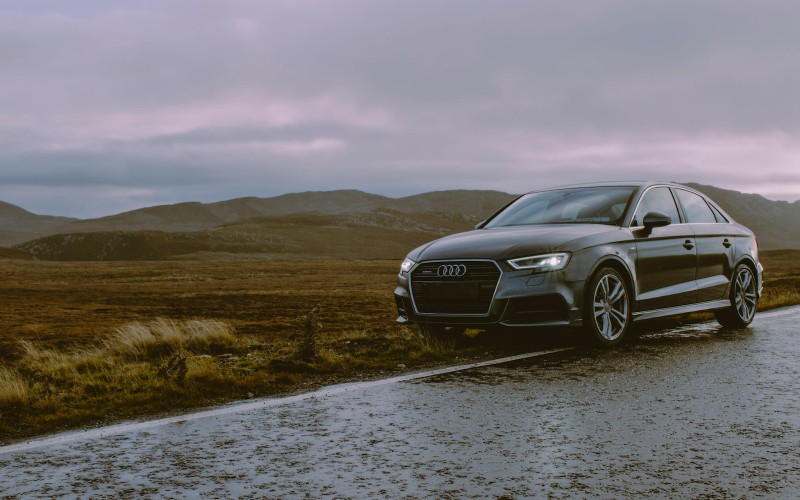When it comes to restoring the appearance of your car after a collision or damage, the front bumper plays a crucial role. A pre-painted front bumper provides a convenient solution for car owners who are looking to replace damaged parts while maintaining a seamless and professional look. In this article, we will explore the DIY tips for installing painted front bumpers, empowering car owners and enthusiasts to tackle this task with confidence.
Assessing the Damage: Determining the Need for a Front Bumper Replacement
Before diving into the installation process, it’s important to assess the extent of the damage to your front bumper. Evaluate any cracks, dents, or scratches to determine whether a replacement is necessary. Minor cosmetic imperfections can often be repaired, but if the damage is severe or compromises the structural integrity of the bumper, it’s advisable to opt for a front bumper replacement. A pre-painted front bumper ensures a perfect color match, saving you time and effort in the painting process.
Choosing the Right Pre-Painted Front Bumper: Factors to Consider
When selecting a pre-painted front bumper, there are several factors to consider. Firstly, ensure that the bumper is designed specifically for your car’s make, model, and year to guarantee a proper fit. Check the color options available and choose the one that matches your car’s original paint color. Additionally, verify the quality of the paint and finish to ensure durability and long-lasting aesthetics. It’s also recommended to read customer reviews and ratings to gauge the satisfaction of previous buyers. Look for reputable sellers or manufacturers that offer high-quality pre-painted front bumpers with a warranty for added peace of mind.
Gathering the Necessary Tools and Materials
Before starting the installation process, gather all the necessary tools and materials. Here are some commonly required items:
- Socket set and wrenches
- Screwdrivers (flathead and Phillips)
- Pry tools or trim removal tools
- Torque wrench
- Trim adhesive or double-sided tape
- Protective gloves
- Safety goggles
- Masking tape
- Cleaning supplies (soap, water, microfiber cloth)
- Leveling tool or measuring tape
- Installation instructions provided with the bumper
Ensure that you have everything on hand before proceeding with the installation to avoid interruptions and delays.
Preparing the Work Area: Safety First
Preparing the work area is essential to ensure a safe and efficient installation process. Start by parking your vehicle in a well-ventilated and well-lit space. Put on protective gloves and safety goggles to shield yourself from any potential hazards. If needed, use jack stands or ramps to elevate the front of your vehicle, allowing easier access to the bumper. Clear the workspace of any debris, and if necessary, use masking tape to protect adjacent areas from accidental scratches or damage during the installation.
Step-by-Step Guide: DIY Installation of a Pre-Painted Front Bumper
Follow these step-by-step instructions for a successful DIY installation of a pre-painted front bumper:
Removing the Old Front Bumper
1. Begin by locating and disconnecting any electrical connections or wiring connected to the front bumper, such as fog lights or sensors.
2. Use a socket set and wrenches to remove the bolts and screws holding the bumper in place. Keep track of the fasteners and store them safely for reinstallation.
3. Carefully detach any clips, retainers, or plastic tabs securing the bumper to the frame of the vehicle.
4. With the help of an assistant, gently pull the old front bumper away from the vehicle, ensuring that it doesn’t get caught on any remaining attachments.
Preparing the New Pre-Painted Front Bumper
1. Before installing the new pre-painted front bumper, carefully inspect it for any shipping damage or imperfections. Contact the seller or manufacturer immediately if you notice any issues.
2. Clean the bumper thoroughly using soap and water, ensuring that it is free from dirt, dust, or debris.
3. Allow the bumper to dry completely before proceeding.
Aligning and Attaching the Front Bumper
1. Position the new pre-painted front bumper in front of the vehicle, aligning it with the mounting points and ensuring a proper fit.
2. Enlist the help of an assistant to hold the bumper in place while you secure it.
3. Attach the clips, retainers, or plastic tabs to secure the bumper to the frame of the vehicle.
4. Begin reattaching the bolts and screws, starting from the center and working outward. Tighten them gradually and evenly, following the torque specifications provided in the installation instructions.
5. Reconnect any electrical connections or wiring that were disconnected earlier, such as fog lights or sensors.
Securing the Front Bumper in Place
1. Once all the fasteners are securely tightened, inspect the front bumper to ensure it is properly aligned and flush with the rest of the vehicle’s body panels.
2. Make any necessary adjustments by slightly loosening the bolts and repositioning the bumper as needed. Use a leveling tool or measuring tape to ensure symmetry.
3. Once satisfied with the alignment, tighten all the bolts and screws to their specified torque settings, ensuring a secure and stable attachment.
Common Mistakes to Avoid During Installation
While installing a pre-painted front bumper, it’s important to avoid some common mistakes that could compromise the installation and overall appearance. Here are a few things to keep in mind:
- Rushing the process: Take your time during each step of the installation to ensure accuracy and avoid mistakes.
- Neglecting to read the instructions: Carefully review the installation instructions provided with the bumper to understand the specific requirements and recommendations.
- Over-tightening or under-tightening bolts: Follow the recommended torque settings to prevent damage to the bumper or the vehicle’s frame.
- Skipping alignment checks: Always double-check the alignment and fitment of the bumper before fully securing it in place.
Post-Installation Tips: Ensuring a Proper Fit and Finish
After successfully installing the pre-painted front bumper, there are a few post-installation tips to follow for a proper fit and finish:
- Inspect the bumper from various angles to ensure it aligns seamlessly with the rest of the vehicle’s body.
- Check for any gaps or inconsistencies between the bumper and adjacent panels. If necessary, make minor adjustments to achieve a flush and uniform appearance.
- Apply trim adhesive or double-sided tape as recommended by the manufacturer to secure any loose or flimsy sections of the bumper.
- Clean the bumper regularly using mild soap and water to maintain its appearance and protect the paint finish.
Maintenance and Care for a Painted Front Bumper
To prolong the lifespan and appearance of your pre-painted front bumper, it’s important to follow proper maintenance and care practices:
- Wash the bumper regularly to remove dirt, grime, and road debris that can accumulate over time.
- Avoid using abrasive cleaners or brushes that could scratch the paint. Instead, use a soft microfiber cloth or sponge.
- Apply a layer of wax or paint sealant to protect the paint finish and enhance its shine.
- Be cautious when parking or maneuvering in tight spaces to prevent accidental bumps or scratches.
Advantages of Choosing Pre-Painted Front Bumpers
Opting for a pre-painted front bumper offers several advantages for car owners:
- Time and cost savings: By choosing a pre-painted bumper, you eliminate the need for additional painting services, saving both time and money.
- Perfect color match: Pre-painted bumpers are designed to match your car’s original paint color, ensuring a seamless and professional look.
- Convenience and ease of installation: With a pre-painted bumper, the installation process becomes simpler and more straightforward, especially with the availability of DIY installation guides and tutorials.
- Quality and durability: Reputable sellers or manufacturers offer high-quality pre-painted bumpers with durable paint finishes that can withstand various weather conditions and everyday wear and tear.
Conclusion
Installing a pre-painted front bumper is a practical and rewarding DIY project that can significantly enhance the appearance of your car. By following the step-by-step tips and guidelines provided in this article, car owners and enthusiasts can confidently replace damaged front bumpers with ease. Remember to choose a reputable seller or manufacturer, gather the necessary tools, and prioritize safety throughout the installation process. With a pre-painted front bumper, you can restore your car’s aesthetics and enjoy a seamless and professional finish. Visit paintedautobodyparts.com to explore a wide range of high-quality pre-painted front bumpers for your vehicle.
Remember, installing a front bumper may require varying levels of technical expertise, and it’s important to assess your own skills and comfort level before attempting the installation. If you’re unsure or feel overwhelmed, it’s always advisable to seek professional help from a certified auto body shop or mechanic.
In conclusion, replacing a front bumper with a pre-painted option offers car owners a convenient and cost-effective solution to restore the appearance of their vehicles. By assessing the damage, choosing the right bumper, gathering the necessary tools, and following the step-by-step installation guide, you can successfully install a pre-painted front bumper and give your car a fresh, new look.
Whether you’re a car enthusiast looking to personalize your vehicle or a car owner in need of a replacement bumper, the DIY tips provided in this article empower you to take control of the installation process. Remember to prioritize safety, read and follow the instructions carefully, and conduct regular maintenance to keep your pre-painted front bumper looking its best.
Upgrade your car’s aesthetics today with a pre-painted front bumper and enjoy the satisfaction of a job well done!


